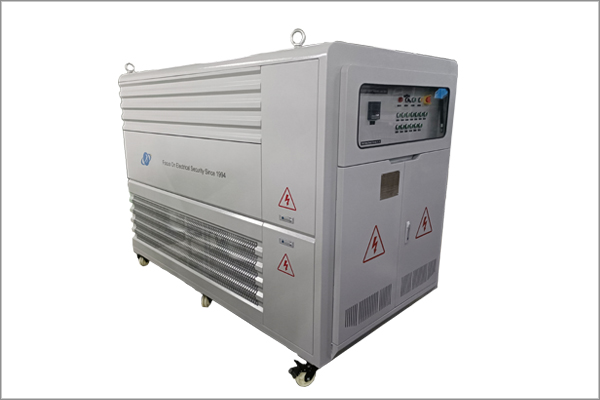In modern power systems and equipment testing, load bank testing technology plays a crucial role. Whether it's factory testing, field commissioning of power equipment, or routine maintenance of power systems, load bank testing technology ensures the safe, stable, and efficient operation of power systems with its unique advantages. This article will delve into load bank testing technology, from basic concepts to advanced applications, providing readers with a comprehensive and in-depth understanding.

1000kW load bank
I. Fundamentals of Load Bank Testing Technology
1. Definition and Classification of Load Banks
A load bank, also known as load testing equipment, is a testing device used to simulate actual load conditions. It converts electrical energy into thermal energy or other forms of energy to simulate the load situation of power systems or equipment under normal or extreme conditions. Depending on the application field, load banks can be classified into resistive load banks, inductive load banks, capacitive load banks, and combined load banks, among others.
2. Basic Principles of Load Bank Testing
The basic principle of load bank testing is to connect the load bank to the tested equipment or system to simulate load changes in actual operation, thereby detecting the performance parameters, stability, thermal effects, and protection mechanisms of the equipment. During the test, key parameters such as voltage, current, power factor, and frequency can be monitored in real-time to assess whether the equipment's performance meets design requirements or industry standards.
II. Intermediate Applications of Load Bank Testing Technology
1. Power System Commissioning and Maintenance
In the commissioning phase of power systems, load bank testing technology is widely used for performance testing of key equipment such as generators, transformers, UPS power supplies, and switchgear. By simulating operating conditions under different loads, potential fault points can be identified and resolved promptly to ensure stable operation after system commissioning. Additionally, in routine maintenance of power systems, load bank testing is an important means of assessing equipment health and predicting equipment life.
2. Verification of Renewable Energy Generation Systems
With the rapid development of renewable energy technologies, the application of load bank testing technology in solar power generation, wind power generation, and other renewable energy fields is increasingly widespread. By simulating complex operating conditions such as grid fluctuations and load mutations, the grid-connection adaptability, response speed, and fault handling capabilities of renewable energy generation systems can be verified, providing strong support for the reliable grid connection and efficient utilization of renewable energy.
III. Advanced Applications of Load Bank Testing Technology
1. Interactive Testing of Smart Grids
In the construction of smart grids, load bank testing technology is not only used for traditional performance verification but also focuses on interactive testing with smart grids. This includes verification of communication protocols with smart grids, demand response capability testing, distributed energy access testing, etc., to ensure that smart grids can maintain efficiency, flexibility, and reliability in complex and variable operating environments.
2. Testing of Electric Vehicle Charging Facilities
With the popularity of electric vehicles, the safety and compatibility of electric vehicle charging facilities have become areas of focus. The application of load bank testing technology in this field can simulate the demands of different charging rates and vehicle models on charging facilities, testing the power distribution, overload protection, communication protocols, and other functions of charging stations, providing technical support for the safe operation and wide compatibility of electric vehicle charging facilities.
3. Testing of Data Center and Cloud Computing Infrastructure
Data centers and cloud computing infrastructure have extremely high requirements for the stability and quality of power supply. Load bank testing technology can simulate the operating conditions of data centers under extreme conditions such as high loads, low voltages, and frequency fluctuations, assessing the emergency response capabilities and continuous power supply capabilities of their uninterruptible power supply systems (UPS) and generators, ensuring the continuity and reliability of data center and cloud computing services.
Conclusion
As an important means of power system and equipment testing, load bank testing technology has a wide range of applications, from basic performance testing to advanced interactive testing of smart grids, playing an irreplaceable role. With continuous technological advancements and expanding application fields, load bank testing technology will continue to provide solid technical support for the safe, stable, and efficient operation of power systems. In the future, with the rapid development of emerging fields such as renewable energy, smart grids, and electric vehicles, load bank testing technology will face more challenges and opportunities, driving power testing technology to new heights.
 2024-09-11
2024-09-11 2023-04-21
2023-04-21 2023-04-06
2023-04-06 2022-05-05
2022-05-05 2022-05-05
2022-05-05

